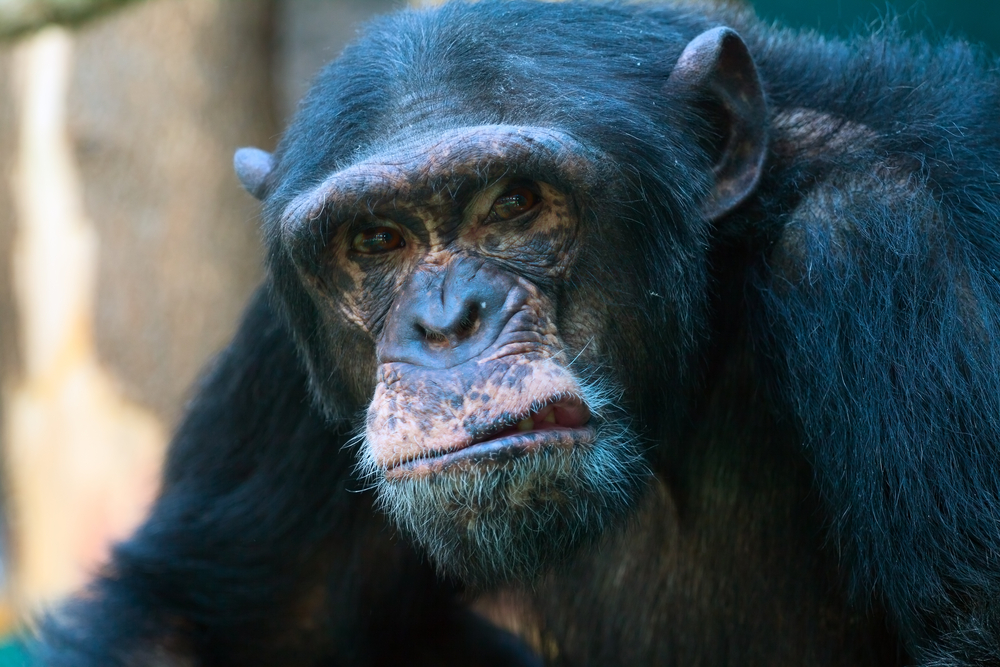
With our unparalleled ability to plan, organise, and wield weaponry, it seems like humans are uniquely gifted in the art of war. However, there’s nothing on our battlefields that Mother Nature didn’t think of first. From insect suicide bombers to violent monkey revolutionaries, our non-human counterparts can sometimes be every bit as strategic, coordinated, and ruthless as we are. Here are four examples of nature’s warring ways, red in tooth and claw.
1. SUICIDE MISSIONS: Termites and ants

Photo by Bernard Dupont
Some sterile workers will do anything in their power to serve queen and colony. Even blow themselves up. Workers belonging to the termite species Neocapritermes taracua collect blue crystals in internal pouches throughout their lives in order to do just that. By the time they’ve outlived their usefulness as foragers and nest-makers, they’ve amassed quite a collection. The pouches are conveniently located beside the workers’ salivary glands, so when they are bitten by an enemy termite, their contents combine with salivary secretions to create a deadly brew. The pouches then burst, martyring the worker and fatally smearing its challenger.
Not to be outdone, ant workers in the species Camponotus cylindricus erupt in a spray of sticky yellow goo when they bite their foes. The foul substance is a combination glue-irritant, so victims suffer an uncomfortable death while bound to the worker’s corpse. The ‘suicide bombers’ will use this defense even when hundreds of metres from the colony, going to great lengths to defend their kin’s foraging ground.
2. TURF WARS: Chimpanzees and meerkats

Photo by By Charlesjsharp / Wikipedia
Social mammals—including humans—are great at working together. Some examples are heartwarming: adult elephants saving a drowning calf, for instance. It’s less charming, but just as impressive, when cooperation leads to killing. Chimpanzees are the masters of strategic attacks. To defend or gain territory, they form gangs and penetrate their neighbours’ patch by stealth.
Once inside, they target a single victim—usually a juvenile—and assault it. The violence could include beating and jumping on the victim, tearing off ears or testes, and even end in cannibalism. It’s savage behaviour, but the stakes are high: more territory means more resources, healthier females, and better reproductive success for the group.
Chimps aren’t the only ones to place a high value on real estate. Even seemingly-sweet meerkats turn deadly serious when their turf is at risk. Competing gangs line up face-to-face and try to intimidate each other. If neither side backs down, the ensuing fight often ends in bloodshed.
3. COUPS D’ÉTAT AND INFANTICIDE: Langurs and lions

Photo by Manoj Nair / Wikipedia
When a nomadic band of Hanuman langur (Semnopithecus entellus) bachelors suspects a dominant male is past his prime, they launch a takeover attempt. If they are successful, the strongest among them becomes the new dominant male. His first act in the role is sometimes to kill any babies in the troop so he can claim his hard-won breeding rights as soon as possible. Otherwise, the females won’t become fertile until the babies are weaned.
This harsh practice is not uncommon in animal societies where reproductive opportunities are limited to a dominant male. By some estimates, infanticide occurs in 25 percent of all mammal species, including baboons, chimpanzees, gorillas, horses, bears, at least one bat species, and many more. Lions make the list, but cheetahs don’t. Cheetah litters have mixed paternity, since mothers mate with multiple males and combine their sperm. The males can’t distinguish whose cubs are whose and don’t risk killing their own. With lions, each cub in the litter shares the same dad. It’s easy for a newly-dominant male to identify unrelated cubs, which may threaten his social position if allowed to reach maturity.
4. BIOLOGICAL AND CHEMICAL WEAPONS: Parasitoid wasps and hairworms

Photo by Alastair Rae
Parasitoids are like parasites, but more terrifying. As larvae, they live inside another animal and eat it alive. Then sometimes, before the host dies, they use specialised weapons to brainwash it and exploit it further.
One disturbing example is the wasp species Dinocampus coccinellae. After bursting out of its ladybird host, the larva spins a cocoon between its legs. You’d expect the ladybird to be annoyed, but instead it shelters the cocoon and shoos away predators. This isn’t the ladybird’s generous nature showing through. It’s the mind-controlling power of an RNA virus the mother wasp injected along with her egg. The ladybird’s guarding behaviours are the result of the virus’s attack on its nervous system. Scientists marvel at this unique, unholy alliance between wasp and virus.
Another gruesome parasitoid is the hairworm (Spinochordodes tellinii). Once it’s fully grown, the worm secretes a protein that hijacks the grasshopper’s central nervous system, causing it to jump into water and die. The hairworm then escapes through the grasshopper’s anus and swims off to find a mate; it can only reproduce in aquatic environments.
